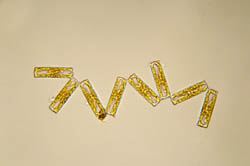Biodefence of the phytoplankton
Plankton are aquatic organisms that cannot swim against the current. Phytoplankton is an algae that lives near the surface of the water where there is enough light to support photosynthesis. Zooplankton represent a higher class of plankton that feed on phytoplankton. The 'Linking inducible chemical defences and phytoplankton population dynamics' (LIDPOP) project was set up with EU funding to study the defence mechanisms that allow phytoplankton to survive. LIDPOP was a multidisciplinary project drawing on methods and expertise from small-scale hydrodynamics, analytical chemistry and ecological modelling. Project researchers performed multiple experiments with cultures of both phytoplankton and zooplankton to identify small molecule mediators that could protect phytoplankton from grazer attacks. They found that some phytoplankton increase their production of toxic substances in response to chemical cues from zooplankton grazers. Gathering information on the effect of grazer-induced toxin formation is very important for the development of computer models of the marine ecosystem. The LIDPOP team developed a MatLab algorithm to identify the algae-based toxin that was responsible for preventing interaction between the two types of plankton. This method could be used to study plankton ecology and proliferation as it is sensitive enough to identify minute concentrations of the released chemicals. Outcomes of the study could lead to the recognition of plankton behaviour as a backbone of the entire marine ecosystem.







